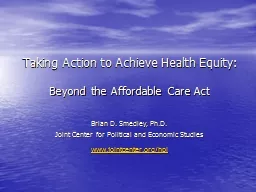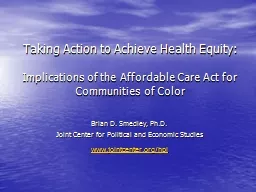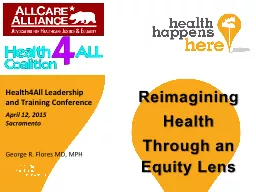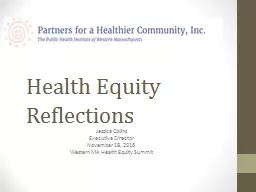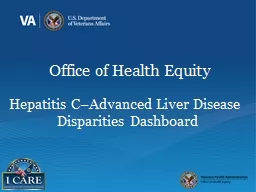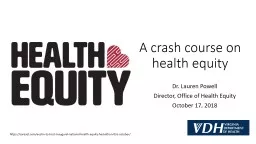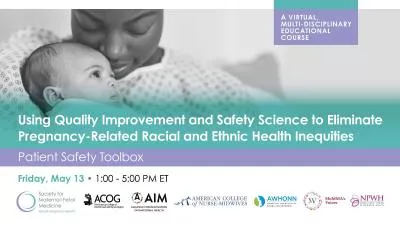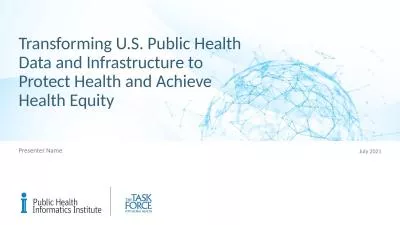PPT-Taking Action to Achieve Health Equity:
Author : tatiana-dople | Published Date : 2016-07-16
Beyond the Affordable Care Act Brian D Smedley PhD Joint Center for Political and Economic Studies wwwjointcenterorghpi Examples of RacialEthnic Health Inequalities
Presentation Embed Code
Download Presentation
Download Presentation The PPT/PDF document "Taking Action to Achieve Health Equity:" is the property of its rightful owner. Permission is granted to download and print the materials on this website for personal, non-commercial use only, and to display it on your personal computer provided you do not modify the materials and that you retain all copyright notices contained in the materials. By downloading content from our website, you accept the terms of this agreement.
Taking Action to Achieve Health Equity:: Transcript
Download Rules Of Document
"Taking Action to Achieve Health Equity:"The content belongs to its owner. You may download and print it for personal use, without modification, and keep all copyright notices. By downloading, you agree to these terms.
Related Documents

